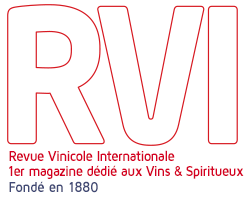London Cognac in Shanghai.
Martell is one of the merchants from elsewhere which has made cognac famous throughout the world… before such international groups as Pernod-Ricard took over. Jean Martell reaches Jersey at the beginning of the 18th century, marries the rich daughter of a Saintonge merchant and establishes an eau-de-vie house in 1721. In 1724, he is already exporting 200,000 litres of cognac to England, a natural market according to his origins. He quickly supplies the British aristocracy, the royal courts of Europe, the House of the Duke of Orleans, the East India Company…
Following his sudden death in 1753, his wife Rachel and his two sons, Jean and Frédéric-Gabriel, take the company over. The birth of the United-States in 1776 doubles the sales of cognac and the royal bill of 1784, granting a tax exemption on all exports of wine and eau-de-vie, largely contributes to the international growth of the company. The momentum ends with the Revolution and the company only starts recovering when, in 1799, it becomes supplier to Napoleon Bonaparte. The barrels, fire marked « J&F Martell », accompany many military and maritime expeditions of the Emperor. During the naval blockade against England, Martell contracts with neutral agents, notably of the Netherlands, to continue his trade of cognac across the Channel. Taking a 1% commission, these agents declare themselves owner of the shipments. The trading company continues its expansion in 1820 with the grandsons of the founder, Théodore and Jean-Gabriel. Its exports towards Great Britain and the United-States keep growing and London becomes its main market place. Barrels are now stamped Martell & Cie (the name Martell will only be registered in 1864).
The first bottles leave to Australia in 1840 and to Hong Kong and China in 1842. Japan will be reached 20 years later. Phylloxera in Charente ends the trade of cognac and shipments only resume at the end of the century (the company has now become a distiller), first towards European courts and then towards the grand hotels of beach tourism and the Parisian palaces. Cordon Bleu, the prestige vintage born in 1922, was served during the Coronation of Georges V, to celebrate the signature of the armistice by Maréchal Foch, in the trains of the Orient Express and in such luxury liners as the Queen Mary or during the wedding of Prince rainier and Grace Kelly, it embarks with Paul-Emile Victor in 1951, celebrates the friendship between France and Japan in 1971… After Second World War, the company launches large advertising campaigns. In 1986, Martell is in second position worldwide and produces 23M bottles.
Exports already represent 96% of sales, the highest percentage at the time, mainly towards Great-Britain, the United-States, Hong Kong, Singapore, Malaysia, … The brand remains very present on the Chinese market; when Hong Kong returns to China in 1977, the company will produce 1997 bottles of the limited edition « Art de Martell » to commemorate the event. But the brand looses some of its dynamism… and more than a third of its volumes in the first 15 years of the twentieth century, notably in the United-States and Great-Britain, once its first market which only accounts for 3.6 million bottles at the beginning of the century (22M in 1991). The massive outflow then reaches 8 to 10 million bottles a year.
Eight generations of Martell followed as head of the company before Seagram took a share of the company in 1988, before taking full control through Mumm Champagnes for a record price, which then equalled the annual global amount of sales of cognac. Towards the middle of the 90’s, the Cognac company sells its armagnac branch (Jeanneau Fils). In 2002, when the company is purchased by Pernod-Ricard which followed the dismantling of Seagram, the brand only represents one million boxes. The French group, under the supervision of Lionel Breton, undertakes to readjust its stocks to the level of sales with heavy reorganisation of its sites and modernisation of its range.
The brand starts to resurface as of 2003 with an increase in shipments towards Great-Britain, China and Hong Kong. It outstrips Rémy Martin and Henessy, notably thanks to its Cordon Bleu, leader in XO’s and to the support of the N°3 of whiskies worldwide, Chivas Regal, part of the same distribution portfolio. One bottle of cognac sold in China out of four is now labelled Martell. The brand has regained its third rank in cognac and re-established its reputation with the launch of advertising campaigns throughout the world and by decentralisation of decisions to remain closer to market demands.
A rationalised range
Martell creates its first VSOP in 1831 and the prestige vintage Cordon Bleu, based on eau-de-vies between 25 and 30 years of age, is launched in 1912. Cordon Noir (15 to 20 years), Cordon Rubis (18 to 20 years) and Cordon Argent Extra (50 years plus) will then reach the market during the twentieth century, but have disappeared in the twenty-first. Over the last few years the brand has been integrated into a brand owning company, Martell-Mumm-Perrier-Jouët, managed by Lionel Breton, and continues its development in ultra-premiums (re-launch of the 40 to 50 years of age Martell Cohiba in 2005, launch of Noblige in 2006, a VSOP+, and of Or de Martell in 2009, in a crystal de Sèvres flask.
A Borderies Style
Over the centuries, Martell disengaged from the Petite Champagne to focus on the Borderies. The oldest cognac house now works in partnership with 200 wine growers but has not distilled in town for more than fifty years. It has now become the biggest landowner in the Cognac region with 1,060 acres (including Château Chanteloup, bought in 1838). It is the first vineyard in Charente to be granted the triple certification for production, vinification and environment, Benoit Fil is its Cellar Master.
November 2012



